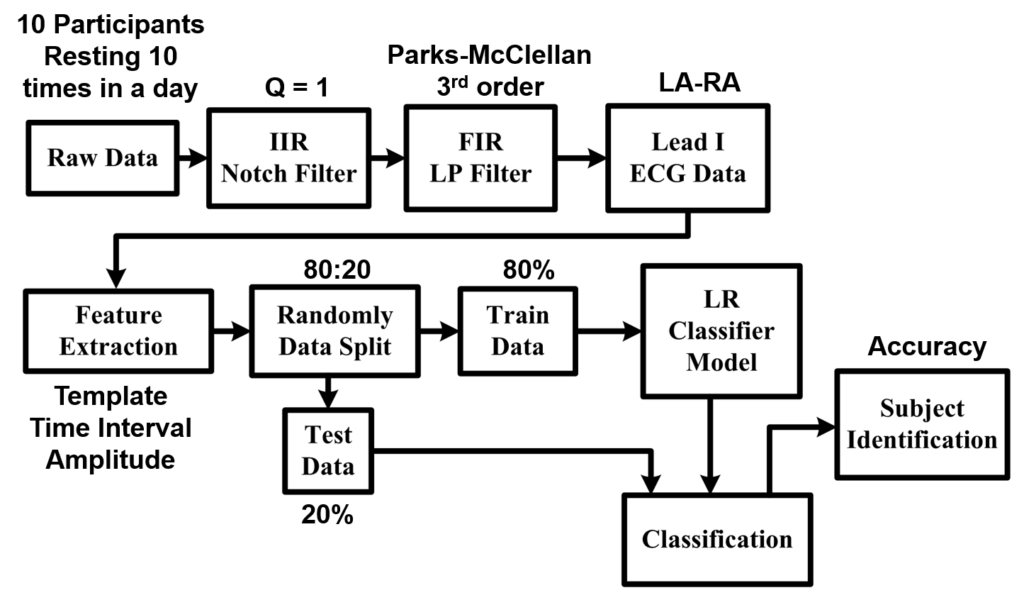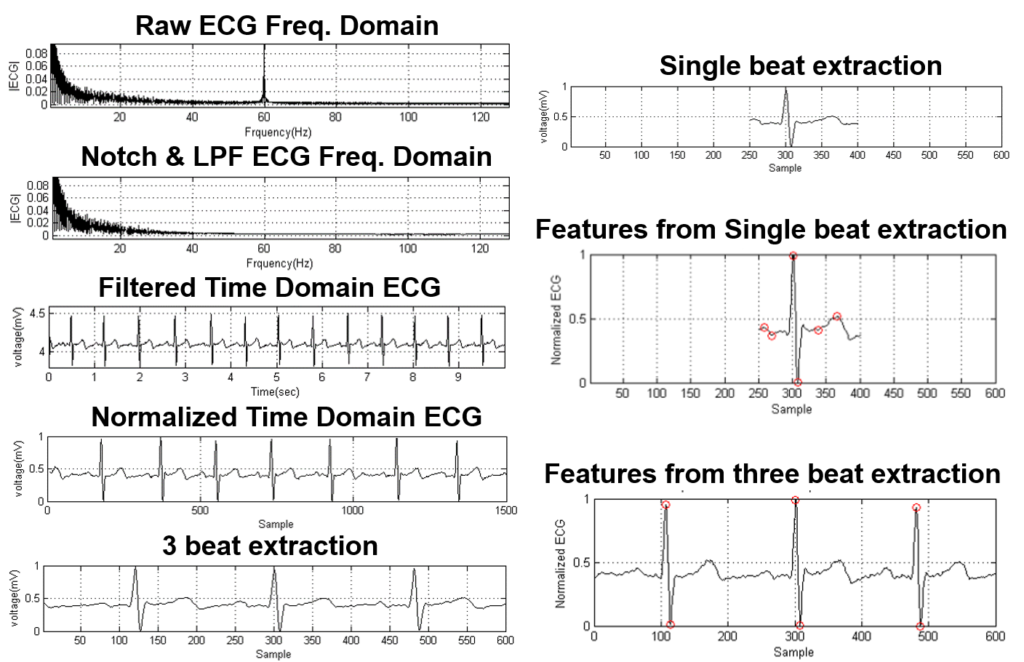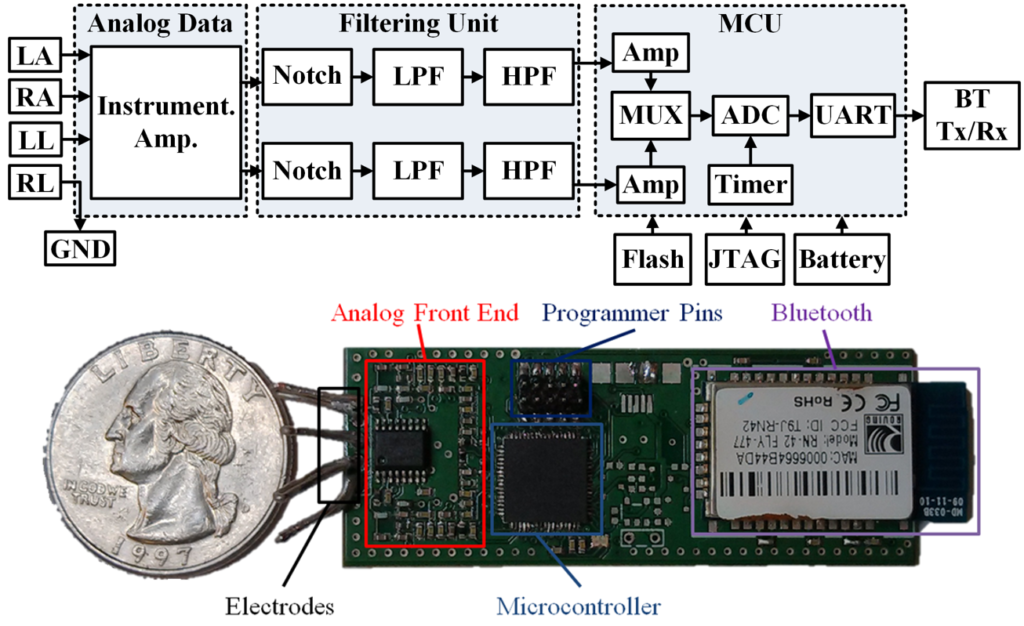Harnessing the Potential of ECG for Biometric Identification

Our research explores the use of electrocardiogram (ECG), traditionally a cardiac diagnostic tool, for biometric identification—an emerging field with a focus on reliability and reproducibility. We present a template matching approach utilizing 12 key features and a logistic regression classifier, achieving exceptional reliability and accuracy.
Using our custom-built ambulatory EEG/ECG embedded device (NeuroMonitor), we captured non-invasive ECG signals from 10 healthy subjects aged 25-35. Each subject underwent 10 trials, with ECG data collected for 10 seconds per trial. We extracted a concise 0.58 seconds of Lead I ECG data from each trial as our template.
Feature extraction leveraged a hardware-efficient fiducial point detection technique. To validate our method, we employed repeated random sub-sampling, splitting data into 80% training and 20% testing sets for classification accuracy assessment.
Our analysis revealed that our template-based approach, incorporating 12 carefully selected features, achieved exceptional performance with accuracy rates reaching up to 100%. Notably, our algorithm’s computation time was impressively low at 1.2ms.
This study underscores the potential of utilizing a single limb (Lead I) ECG for robust and efficient individual identification, highlighting the feasibility of our approach in real-world applications requiring minimal contact and streamlined data processing.


Advancing Neurotechnology for Natural Setting Monitoring
Our research focuses on developing a compact, wearable electroencephalogram (EEG) device integrated with other sensing modalities to enable long-duration monitoring of neurological disorder patients using a CPS-based BCI approach. This project is made possible through funding from the Strengthening Communities Initiative (SCI) capacity building grant in collaboration with Special Kids & Families (SKF).
Neuronal activity generates subtle electrical potentials transmitted via neurotransmitters in synaptic bulbs. Scalp EEG captures these collective activities as oscillatory waves, reflecting mental states, cognitive loads, stimuli, and perceptions. Our system, achieved through hardware-software co-design, records EEG activity from the prefrontal cortex in natural settings during regular activities.

The system features a 4-stage biopotential amplifier with active analog filtering, a 16-bit ADC on a PSoC3 microcontroller, and other peripherals and power management circuits. Compact in size (2.2” x 0.8” x 0.36”, 41.8 gm with 800 mAh Li-ion battery and 3 snap leads), it can be discreetly concealed within a headband. Data can be wirelessly transmitted for real-time monitoring or stored onboard for offline analysis, enabling multimodal sensing with contextual insights.
Current applications include studying engagement in children with developmental delays (ASD, ADHD, cerebral palsy), seizure detection and advisory systems for epileptic patients, and real-time monitoring of Alzheimer’s, TBI, PTSD, and other neurological disorders in natural settings. The platform holds promise for BCI studies like thought-controlled computing and electronic mental health monitoring.
Introducing the Vertically Aligned Carbon Nanotube-Based Sensor
In 2015, during my MS at the University of Memphis, I pioneered a vertically aligned carbon nanotube-based sensor, showcased in the top-left figure. This innovative sensor’s functionality was validated using an agar gel human skin emulator and compared against the widely utilized GS26 sensor for ECG data collection, as illustrated in the top-right figure displaying the received signals from both sensors.
For further insights, refer to the associated patent for comprehensive details on this groundbreaking technology.
